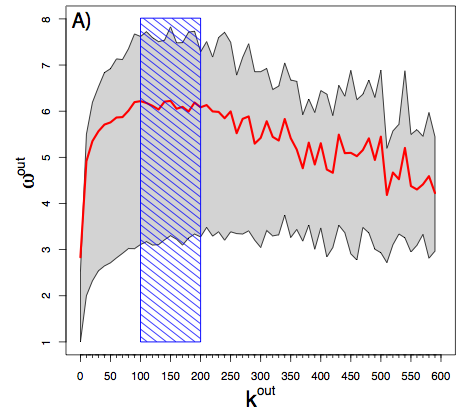One of the most interesting numbers in the field of social experience design is the Dunbar’s Number, usually defined as 148 but in reality set inside the interval between 100 and 230 (it’s not very precise), that identifies the largest number possible for a cohesive community to stay together as such. The interesting part is that Dunbar derived that number for humans analyzing non-human primates cortical size in relation to community sizes and extrapolating the value that should exist due to the human cortical size.
That value was validated by a few observation on human behaviour, since prehistory to our days, and it was confirmed by Bernard and Killworth, even if with an higher result: 290.
While social networks were thought to be able to raise sensibly Dunbar’s Number upper limit, it seems that it’s not the case. A recent research by Gonçalves, Perra and Vespignani (USA/Italy) analyzed 381.652.990 tweets, 3.006.180 users in a time range of 4 years and focusing on the social interactions between people they were able to model an algorithm to identify the most cohesive group.
The result is very interesting:
The data shows that this quantity [the strength of social interactions] reaches a maximum between 100 and 200 friends, in agreement with Dunbar’s prediction. This finding suggests that even though modern social networks help us to log all the people with whom we meet and interact, they are unable to overcome the biological and physical constraints that limit stable social relations.
The number of reciprocated connections saturates between 200 and 300 event though the number of incoming connections continues to increase.
It’s still important to notice that while Dunbar’s Number is constant, this doesn’t mean absolutely that nothing changes with the usage of social networks. As often happens, it’s more complex than that. For example they still support us:
- in creating new relations,
- in supporting weak connections,
- in keeping together a specific cohesive group that might not be that way otherwise.
The understanding of the underlying principle of Dunbar’s Number is helpful to both designers and users to get the maximum possible from these social tools, without falling into the trap of trying to do too much… until we find of course a way to do that. ;)
(via The Physics arXiv Blog: Human Brain Limits Twitter Friends to 150)
